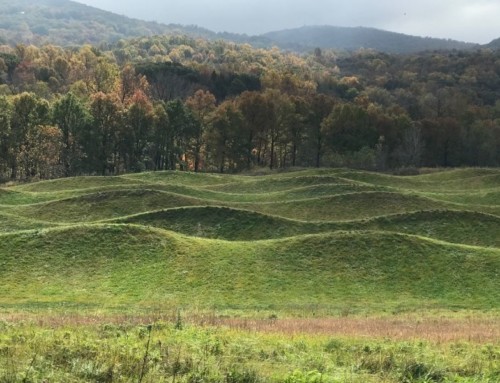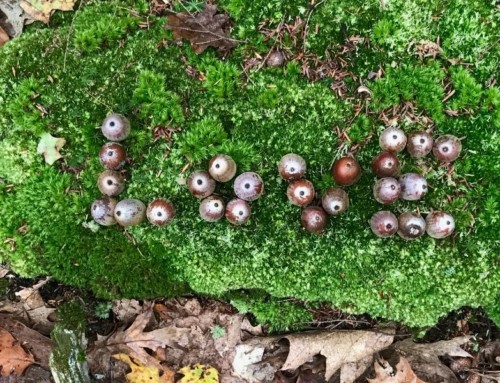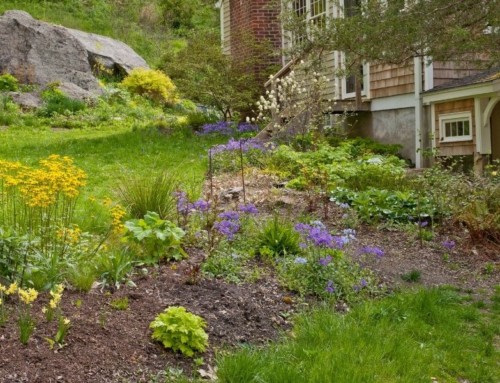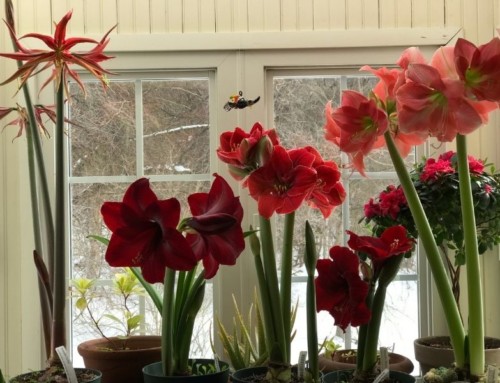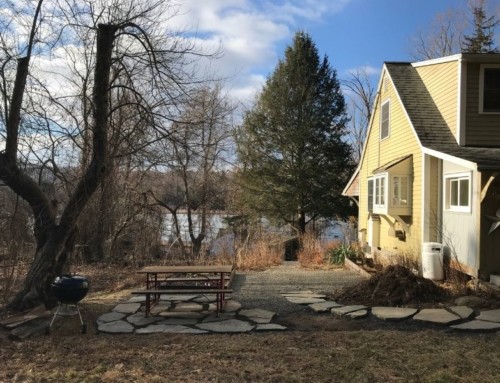Late summer/early fall is a critical time for bees to forage for nourishment to sustain them through the winter.
Next year’s bumble bee queens must build up energy reserves before hibernating. Honeybees are in a hurry to provision the hive – they’re active year-round and need food to last until spring. Worker wasps binge and die – only mated queens overwinter.
I could pat myself on the back for creating the crescendo of bloom, buzzing insects and chirping birds surrounding my home right now, but I won’t.
Much of this bounty – and beauty – came as a surprise, although I did have a hand in it.
It’s partly from “setting a process in motion,” as ecological landscape designer Larry Weaner would say, by planting certain plants and letting them do their thing.
And it’s partly from being too busy to stay on top of it all – and realizing that I just can’t control everything, so I may as well enjoy the ride. Imperfect maintenance – and aggressive native plants – have their benefits.
Although never prissy, my gardens were neater when I was young, full of energy and trying to garden by the horticultural book. They were less “of the place,” less coherent – and they sure were a lot of work.
I’ve come to distinguish between what is landscape and what is garden, learned to draw some lines and blend one into the other.
LANDSCAPE VS. GARDEN
Among the many native perennials in my landscape, goldenrod has the highest ecological and wildlife value. It’s a standout “good guy,” a beneficent prince.
It’s also one of the worst thugs in the prime real estate of my gardens.
Canada goldenrod (Solidago canadensis) and a few other favorite, super valuable plants, reproduce too enthusiastically – and grow too tall – in my rich, carefully double-dug (before I knew how crazy that was) garden soil.
They obliterate beds, edges, paths, stone steps, space and all sense of design and order, popping up here and there randomly, rooting into the crowns of less tenacious plants, towering over more polite garden citizens.
I recognize and embrace their tremendous value, but where I want them to grow and where they want to be are at odds.
Managing these plants is more like herding than gardening.
THE VICES AND VIRTUES OF GOLDENROD
Canada goldenrod is native the northeast, where it is widespread, but considered invasive elsewhere. It is aggressively rhizomatous to the extent that it needs to be managed even in planted meadows, where diversity is encouraged.
Goldenrods do not cause hayfever (ragweed is the culprit). Their large sticky pollen grains can’t fly through the air, but they do nourish many native bees specializing on goldenrods, and provide copious nectar.
On the whole, goldenrods are
- Beautiful
- Drought-tolerant
- A top host plant for caterpillars that become moths, butterflies – or bird food
- Comprised of many tiny flowers that feed small beneficial insects
- The only food source for numerous specialist bees, plus generalists
- A source of seeds for songbirds and small mammals
- Home to overwintering insects (some of which form galls), eggs of tunnel-nesting bees and insect larvae in their stems.
- Good soil stabilizers that let rainwater and runoff infiltrate
- Unpalatable to deer
Some I’ve planted, and some were just here, such as the lovely clump-forming blue-stemmed goldenrod (Solidago caesia), which I encourage to spread by scattering ripe seed.
I’ve often admired Solidago rugosa ‘Fireworks’ in naturalistic plantings and perennial borders. It’s promoted as a tall mound of explosive blooms. But keep an eye on it – mine seems to have reverted to the more aggressive species.
Solidago shortii ‘Solar Cascade’, developed to preserve an endangered species, is adapted to gravelly, well-drained sites in full sun to part shade.
It’s supposed to be knee height and clump forming, spreading slowly by short rhizomes to form colonies. But in my rich soil, it tops 3′ and comes up in the middle of clumping grasses and Phlox subulata edging – and cascades all over the place.
Maybe it’s a case of right plant in the wrong place.
Many native plants prefer lean soils. As the Chicago Botanic Garden’s Plant Evaluation Notes on goldenrods for the garden notes, “Plants may become rampant when grown in rich garden soils.” An understatement in my yard.
ENCOURAGE, TOLERATE OR BANISH, THAT IS THE QUESTION
Goldenrods are so hard to tell apart, and they do hybridize in nature. With all the pollinators buzzing around my yard, maybe that’s why I don’t even know what I have or where it came from anymore.
But I do know where I draw the line on rampant goldenrods, as valuable to wildlife as they are.
And while I’m drawing lines, enthusiastically self-sowing white snakeroot (Ageratina altissima, formerly Eupatorium rugosum) and some native asters can also be random and pushy – and hard to dig out.
White snakeroot is native to rich or rocky woods in the East (places like my yard). Its billows of white, long-lasting flower clusters, so valuable to beneficial insects, are avoided by deer and toxic to cattle, which pass on the poison in their milk.
They can all go crazy on the upper slope, in wild places along edges and in the too-steep-to-mow strips flanking my long driveway. Let them slug it out there.
If they get the upper hand in a garden, sometimes you have to dig it all up to get the rhizomes untangled – that’s what I spent the summer doing, digging and re-planting.
I don’t ever want to have to do that again.
As Joann Viera, Director of Horticulture for The Trustees of Reservations in Massachusetts said in her recent talk, Designing for Birds, for CT Hort – with some plants “you have to be judicious about how much you let go to seed.”
I’ve taken her words to heart with renewed energy.
I’m enjoying the flowers until they fade, and then it’s “off with their heads” before they morph into seed-transporting fluff. I leave tall stems standing so I know what to dig out in spring, if I don’t get to them sooner.
I do love these plants, but I’m tired of being bullied.
I’m setting a new process in motion so I can grow a diversity of more easily managed plants that feed wildlife through the entire growing season.

